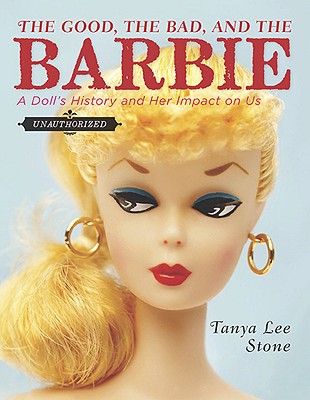
Is there any one toy that is more closely associated with childhood - specifically female childhood - than Barbie? Since she was first introduced over fifty years ago, Barbie has been part of so many girls' lives. The Good the Bad and the Barbie: A Doll's History and Her Impact on Us tells the story of Barbie and how she went from a toy to a lifestyle. It's also the story of Ruth Handler, the creator of Barbie and one of the founders of Mattel. With lots of pictures and images from the last half century, this book is a close look at what Barbie means to different people. Does she represent choice? Does she represent empowerment? Or does she represent a single beauty ideal that no one can live up to?
Stone writes about strong female figures, so it makes sense that Barbie became the focus of her latest book. At times I wished that she answered some of these questions rather than asked them, but then that would be taking some of the hard work away from me, and every other person reading this book. It's something that each person must figure out for themselves. I grew up loving Barbies and had a lot of them (although a lot of mine were generic knock-offs), but I used them more as puppets in my imaginative storytelling than anything else. My Barbies were Russian spies and Olympic athletes; they had adventures but, yes, they looked stylish in their clothes while they did it. I commented in an earlier post about how one Barbie book had shaped my ideas around what was feminine and beautiful. It's a lot to think about - but it's good to think about.
Read it with:
A Bad Boy Can Be Good for a Girl by Tanya Lee Stone
Almost Astronauts: 13 Women Who Dared to Dream by Tanya Lee Stone
Barbie: Her Life and Times and the New Theatre of Fashion by BillyBoy
The Missing Wedding Dress Featuring Barbie by Karen Krugman
Forever Barbie: The Unauthorized Biography of a Real Doll by M.G. Lord
No comments:
Post a Comment